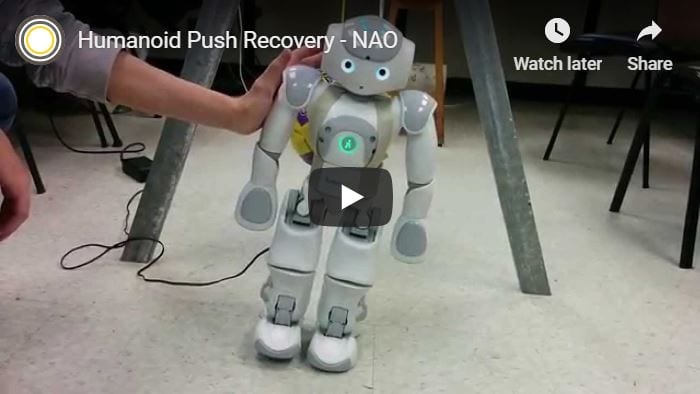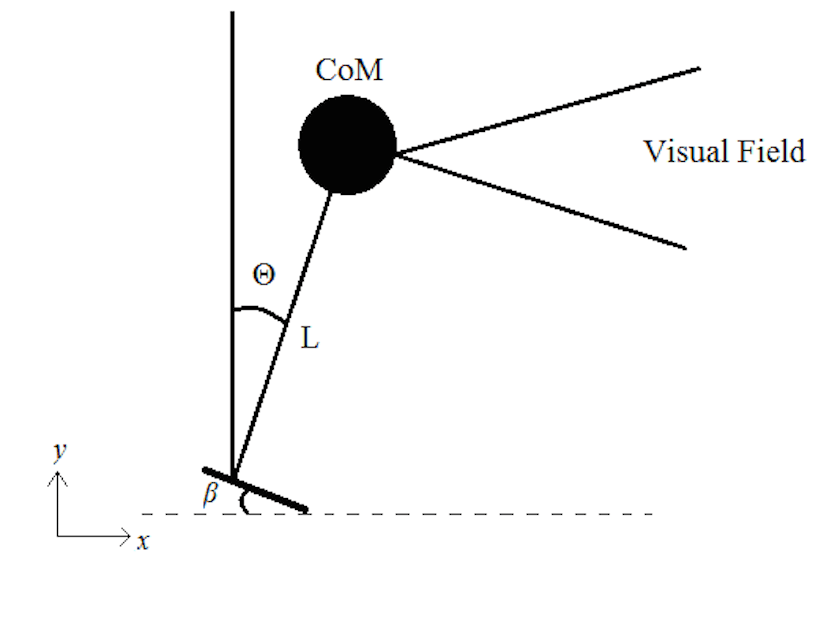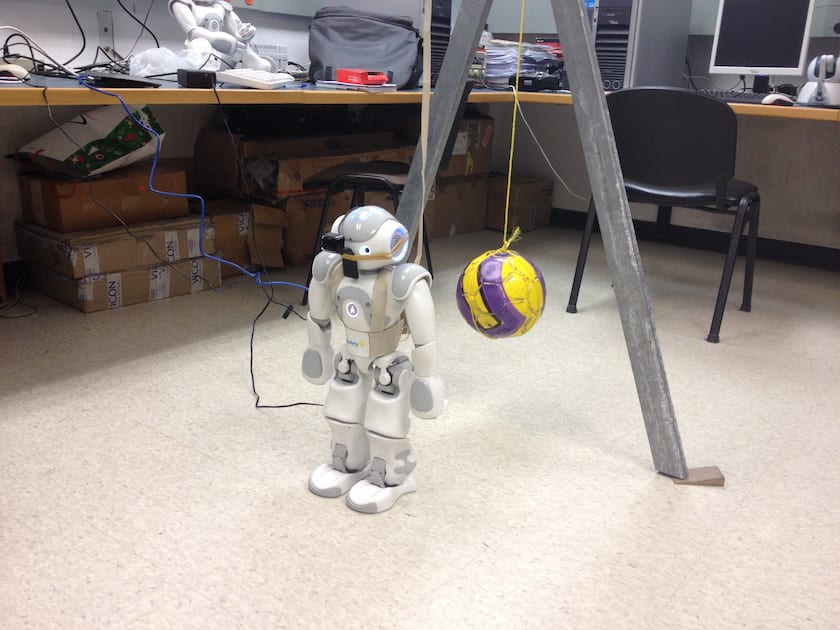Projects List
- Soft nonholonomic constraints: Theory and applications to optimal control
- Design and Modeling of a Novel Single-Actuator Differentially Driven Robot
- Depth estimation from edge and blur estimation
- Occlusion detection & handling in monocular SLAM
- Autonomous Underwater Vehicle for Monitoring of Maritime Pollution
- Teleoperation of UAV with Haptic Feedback
- Advanced Control Strategies for Unmanned Aerial Vehicles
- Ground Vehicles Driver Assistance and Active Safety Control Systems
- Pedestrian Detection
- Towards Fully Autonomous Self-Supervised Free Space Estimation
- Object-Oriented Structure from Motion
- Humanoid Fall Avoidance
Humanoid Fall Avoidance
Humanoid fall avoidance is important in protecting the robot against breakage and saving time needed to recover from a fall. Humanoids come across various disturbances that could be harmful if not treated properly. Several humanoids are meant to operate around humans, so bumps and trips are inevitable. If no fall avoidance methods are applied, there exists a risk of harm to the individuals in the environment and damage to the robot thus requiring costly maintenance. Most fall avoidance strategies rely on single sensors that measure angular position or velocity of the robot’s Centre of Mass (CoM). However, in everyday operations, these sensors are prone to noise that render the measurements inaccurate and deceptive. For example, if the robot is standing on an uneven terrain, the proprioceptive sensor alone will not give a reliable evaluation of balance. As a result, there is a dire need for improved fall avoidance strategies to ensure the safety of the humanoids and humans working in the same environments.
By: Noel Maalouf





